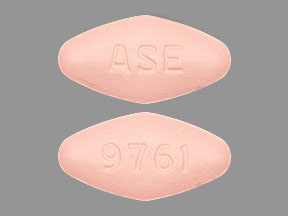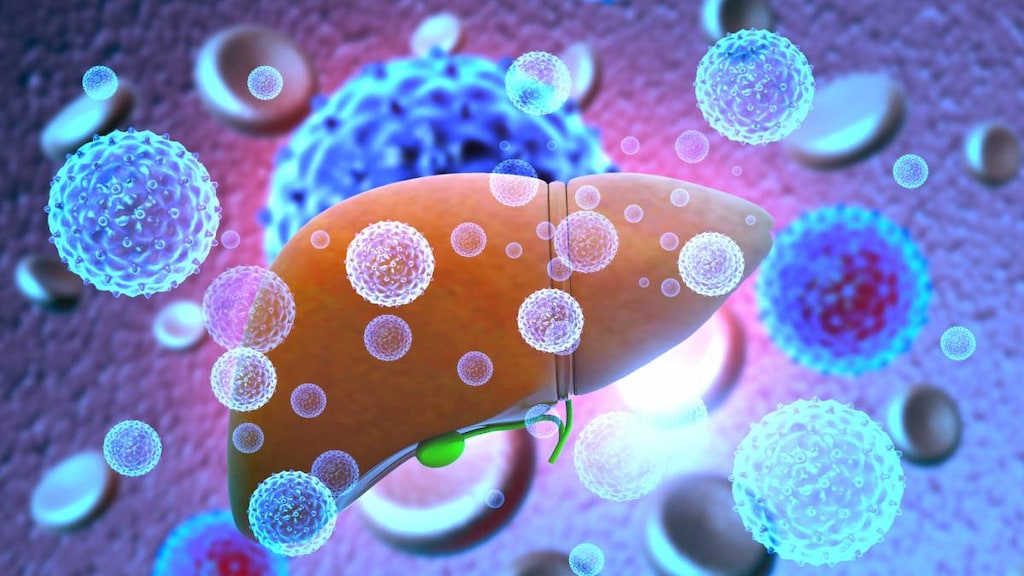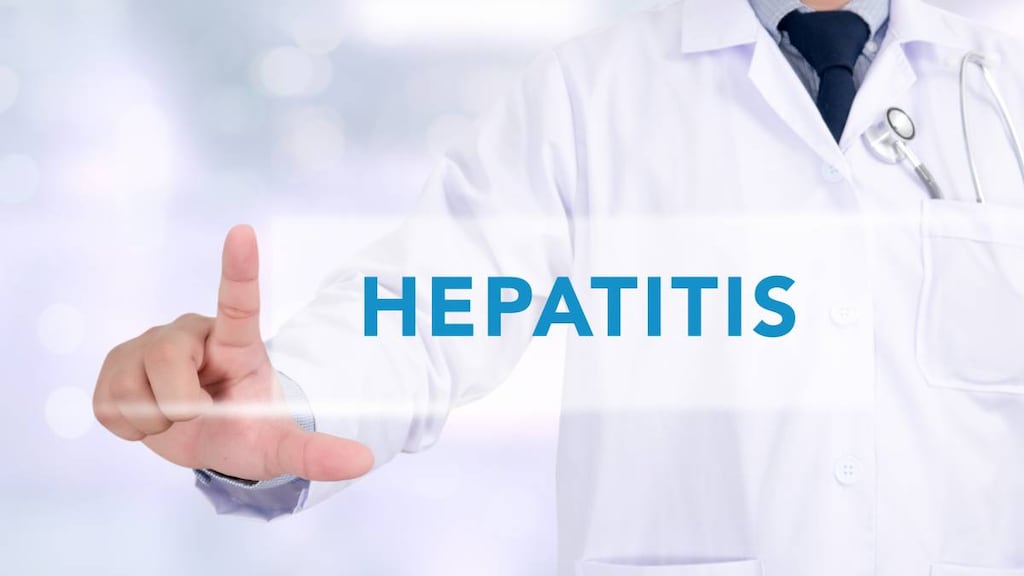Boxed Warning
Hepatitis B virus reactivation:
Test all patients for evidence of current or prior hepatitis B virus (HBV) infection before initiating treatment with sofosbuvir/velpatasvir. HBV reactivation has been reported in hepatitis C virus (HCV)/HBV co-infected patients who were undergoing or had completed treatment with HCV direct acting antivirals and were not receiving HBV antiviral therapy. Some cases have resulted in fulminant hepatitis, hepatic failure, and death. Monitor HCV/HBV co-infected patients for hepatitis flare or HBV reactivation during HCV treatment and post-treatment follow-up. Initiate appropriate patient management for HBV infection as clinically indicated.
Dosage Forms
Excipient information presented when available (limited, particularly for generics); consult specific product labeling.
Tablet, Oral:
Epclusa: Sofosbuvir 400 mg and velpatasvir 100 mg
Generic: Sofosbuvir 400 mg and velpatasvir 100 mg
Pharmacology
Mechanism of Action
Velpatasvir inhibits the HCV NS5A protein necessary for viral replication; sofosbuvir is a prodrug converted to its pharmacologically active form (GS-461203), which inhibits NS5B RNA-dependent RNA polymerase, also essential for viral replication, and acts as a chain terminator.
Pharmacokinetics/Pharmacodynamics
Metabolism
Velpatasvir: Hepatic; substrate of P-gp, organic anion-transporting polypeptides (OATPs) and CYP 2B6, CYP 2C8, and CYP 3A4 (Smolders 2016)
Sofosbuvir: Hepatic; forms pharmacologically active nucleoside (uridine) analog triphosphate GS-461203; dephosphorylation results in the formation of nucleoside inactive metabolite GS-331007
Excretion
Velpatasvir: Urine: 0.4%, feces: 94%; Sofosbuvir: Urine: 80%; feces: 14%
Time to Peak
Velpatasvir: 3 hours; Sofosbuvir: 0.5 to 1 hour
Half-Life Elimination
Velpatasvir: 15 hours; Sofosbuvir: 0.5 hours
Protein Binding
Velpatasvir: >99.5%; Sofosbuvir: 61% to 65%
Use in Specific Populations
Special Populations: Renal Function Impairment
Sofosbuvir: Sofosbuvir AUC0-∞ was 61%, 107%, and 171% higher in subjects with mild, moderate, and severe renal impairment, while the GS-331007 AUC0-∞ was 55%, 88%, and 451% higher, respectively. In subjects with ESRD, relative to subjects with normal renal function, sofosbuvir and GS-331007 AUC0-∞ was 28% and 1,280% higher when sofosbuvir was dosed 1 hour before hemodialysis compared with 60% and 2070% higher when sofosbuvir was dosed 1 hour after hemodialysis, respectively.
Special Populations: Hepatic Function Impairment
Sofosbuvir: Sofosbuvir AUC0-24 were 126% and 143% higher in moderate and severe hepatic impairment, while the GS-331007 AUC0-24 were 18% and 9% higher, respectively. Population pharmacokinetics analysis in HCV-infected subjects indicated that cirrhosis (including decompensated cirrhosis) had no clinically relevant effect on the exposure of sofosbuvir and GS-331007.
Use: Labeled Indications
Chronic hepatitis C: Treatment of chronic hepatitis C (CHC) genotype 1, 2, 3, 4, 5, or 6 infection in adults without cirrhosis or with compensated cirrhosis or in combination with ribavirin in patients with decompensated cirrhosis.
Contraindications
There are no contraindications listed in the US manufacturer's labeling. If sofosbuvir/velpatasvir is administered with ribavirin, the contraindications to ribavirin also apply. See ribavirin manufacturer's labeling information.
Canadian labeling: Hypersensitivity to sofosbuvir, velpatasvir, or any component of the formulation.
Dosage and Administration
Dosing: Adult
Chronic hepatitis C (HCV monoinfected or HCV/HIV co-infected): Oral:
Genotype 1a:
Treatment-naive or peginterferon/ribavirin experienced without cirrhosis or with compensated cirrhosis (Child-Pugh class A): One tablet once daily for 12 weeks (AASLD/IDSA 2018).
NS3 protease inhibitor + peginterferon/ribavirin experienced without cirrhosis or with compensated cirrhosis (Child-Pugh class A): One tablet once daily for 12 weeks (AASLD/IDSA 2018).
With decompensated cirrhosis: One tablet once daily with concomitant ribavirin for 12 weeks (if ribavirin-ineligible, one tablet once daily for 24 weeks) (AASLD/IDSA 2018).
Prior treatment failure with sofosbuvir- or NS5A-based regimens: One tablet once daily with concomitant ribavirin for 24 weeks (AASLD/IDSA 2018).
Genotype 1b:
Treatment-naive or peginterferon/ribavirin experienced without cirrhosis or with compensated cirrhosis (Child-Pugh class A): One tablet once daily for 12 weeks (AASLD/IDSA 2018).
NS3 protease inhibitor + peginterferon/ribavirin experienced without cirrhosis or with compensated cirrhosis (Child-Pugh class A): One tablet once daily for 12 weeks (AASLD/IDSA 2018).
Non-NS5A inhibitor, sofosbuvir-containing regimen-experienced without cirrhosis or with compensated cirrhosis (Child-Pugh class A): One tablet once daily for 12 weeks (AASLD/IDSA 2018).
With decompensated cirrhosis: One tablet once daily with concomitant ribavirin for 12 weeks (if ribavirin-ineligible, one tablet once daily for 24 weeks) (AASLD/IDSA 2018).
Prior treatment failure with sofosbuvir- or NS5A-based regimens: One tablet once daily with concomitant ribavirin for 24 weeks (AASLD/IDSA 2018).
Genotype 2:
Treatment-naive or peginterferon/ribavirin experienced without cirrhosis or with compensated cirrhosis (Child-Pugh class A): One tablet once daily for 12 weeks (AASLD/IDSA 2018).
Sofosbuvir + ribavirin-experienced without cirrhosis or with compensated cirrhosis (Child-Pugh class A): One tablet once daily for 12 weeks (AASLD/IDSA 2018).
With decompensated cirrhosis: One tablet once daily with concomitant ribavirin for 12 weeks (if ribavirin-ineligible, one tablet once daily for 24 weeks) (AASLD/IDSA 2018).
Prior treatment failure with sofosbuvir- or NS5A-based regimens: One tablet once daily with concomitant ribavirin for 24 weeks (AASLD/IDSA 2018).
Liver transplant recipients with compensated cirrhosis (Child-Pugh class A) (alternative regimen): One tablet once daily with concomitant ribavirin for 12 weeks (AASLD/IDSA 2018).
Liver transplant recipients with decompensated cirrhosis (Child-Pugh class B or C): One tablet once daily with concomitant ribavirin for 12 weeks (AASLD/IDSA 2018).
Genotype 3:
Treatment-naive without cirrhosis or with compensated cirrhosis (Child-Pugh class A): One tablet once daily for 12 weeks (AASLD/IDSA 2018).
Peginterferon/ribavirin experienced without cirrhosis: One tablet once daily for 12 weeks (AASLD/IDSA 2018).
Peginterferon/ribavirin experienced with compensated cirrhosis (Child-Pugh class A) (alternative regimen): One tablet once daily, with concomitant ribavirin, for 12 weeks (AASLD/IDSA 2018).
With decompensated cirrhosis: One tablet once daily with concomitant ribavirin for 12 weeks (if ribavirin-ineligible, one tablet once daily for 24 weeks) (AASLD/IDSA 2018).
Prior treatment failure with sofosbuvir- or NS5A-based regimens: One tablet once daily with concomitant ribavirin for 24 weeks (AASLD/IDSA 2018).
Liver transplant recipients with compensated cirrhosis (Child-Pugh class A) (alternative regimen): One tablet once daily with concomitant ribavirin for 12 weeks (AASLD/IDSA 2018).
Liver transplant recipients with decompensated cirrhosis (Child-Pugh class B or C): One tablet once daily with concomitant ribavirin for 12 weeks (AASLD/IDSA 2018).
Genotype 4, 5, or 6:
Treatment-naive or peginterferon/ribavirin experienced without cirrhosis or with compensated cirrhosis (Child-Pugh class A): One tablet once daily for 12 weeks (AASLD/IDSA 2018).
With decompensated cirrhosis: One tablet once daily with concomitant ribavirin for 12 weeks (if ribavirin-ineligible, one tablet once daily for 24 weeks) (AASLD/IDSA 2018).
Prior treatment failure with sofosbuvir- or NS5A-based regimens: One tablet once daily with concomitant ribavirin for 24 weeks (AASLD/IDSA 2018).
Dosing: Geriatric
Refer to adult dosing.
Administration
Oral: Administer with or without food.
Storage
Store below 30°C (86°F). Dispense in original container.
Sofosbuvir and Velpatasvir Images
Drug Interactions
Afatinib: P-glycoprotein/ABCB1 Inhibitors may increase the serum concentration of Afatinib. Management: Reduce afatinib by 10 mg if not tolerated. Some non-US labeling recommends avoiding combination if possible. If used, administer the P-gp inhibitor simultaneously with or after the dose of afatinib. Consider therapy modification
Alpelisib: BCRP/ABCG2 Inhibitors may increase the serum concentration of Alpelisib. Management: Avoid coadministration of BCRP/ABCG2 inhibitors and alpelisib due to the potential for increased alpelisib concentrations and toxicities. If coadministration cannot be avoided, closely monitor for increased alpelisib adverse reactions. Consider therapy modification
Amiodarone: Sofosbuvir may enhance the bradycardic effect of Amiodarone. Avoid combination
Antacids: May decrease the serum concentration of Velpatasvir. Management: Separate administration of velpatasvir and antacids by at least 4 hours. Consider therapy modification
Antidiabetic Agents: Direct Acting Antiviral Agents (HCV) may enhance the hypoglycemic effect of Antidiabetic Agents. Monitor therapy
Asunaprevir: OATP1B1/1B3 (SLCO1B1/1B3) Inhibitors may increase the serum concentration of Asunaprevir. Avoid combination
AtorvaSTATin: Velpatasvir may increase the serum concentration of AtorvaSTATin. Monitor therapy
Betrixaban: P-glycoprotein/ABCB1 Inhibitors may increase the serum concentration of Betrixaban. Management: Decrease the adult betrixaban dose to an initial single dose of 80 mg followed by 40 mg once daily if combined with a P-glycoprotein inhibitor. Consider therapy modification
Bilastine: P-glycoprotein/ABCB1 Inhibitors may increase the serum concentration of Bilastine. Management: Consider alternatives when possible; bilastine should be avoided in patients with moderate to severe renal insufficiency who are receiving p-glycoprotein inhibitors. Consider therapy modification
Brentuximab Vedotin: P-glycoprotein/ABCB1 Inhibitors may increase the serum concentration of Brentuximab Vedotin. Specifically, concentrations of the active monomethyl auristatin E (MMAE) component may be increased. Monitor therapy
Celiprolol: P-glycoprotein/ABCB1 Inhibitors may increase the serum concentration of Celiprolol. Monitor therapy
Cladribine: BCRP/ABCG2 Inhibitors may increase the serum concentration of Cladribine. Management: Avoid concomitant use of BCRP inhibitors during the 4 to 5 day oral cladribine treatment cycles whenever possible. If combined, consider dose reduction of the BCRP inhibitor and separation in the timing of administration. Consider therapy modification
Colchicine: P-glycoprotein/ABCB1 Inhibitors may increase the serum concentration of Colchicine. Colchicine distribution into certain tissues (e.g., brain) may also be increased. Management: Colchicine is contraindicated in patients with impaired renal or hepatic function who are also receiving a p-glycoprotein inhibitor. In those with normal renal and hepatic function, reduce colchicine dose as directed. See full monograph for details. Consider therapy modification
CYP2B6 Inducers (Moderate): May decrease the serum concentration of Velpatasvir. Avoid combination
CYP3A4 Inducers (Moderate): May decrease the serum concentration of Velpatasvir. Avoid combination
CYP3A4 Inducers (Strong): May decrease the serum concentration of Velpatasvir. Avoid combination
Dabigatran Etexilate: P-glycoprotein/ABCB1 Inhibitors may increase serum concentrations of the active metabolite(s) of Dabigatran Etexilate. Monitor therapy
Deferasirox: May decrease the serum concentration of CYP3A4 Substrates (High risk with Inducers). Monitor therapy
Digoxin: Velpatasvir may increase the serum concentration of Digoxin. Monitor therapy
DOXOrubicin (Conventional): P-glycoprotein/ABCB1 Inhibitors may increase the serum concentration of DOXOrubicin (Conventional). Management: Seek alternatives to P-glycoprotein inhibitors in patients treated with doxorubicin whenever possible. One U.S. manufacturer (Pfizer Inc.) recommends that these combinations be avoided. Consider therapy modification
Edoxaban: P-glycoprotein/ABCB1 Inhibitors may increase the serum concentration of Edoxaban. Management: See full monograph for details. Reduced doses are recommended for patients receiving edoxaban for venous thromboembolism in combination with certain P-gp inhibitors. Similar dose adjustment is not recommended for edoxaban use in atrial fibrillation. Consider therapy modification
Elagolix: OATP1B1/1B3 (SLCO1B1/1B3) Inhibitors may increase the serum concentration of Elagolix. Avoid combination
Erdafitinib: May decrease the serum concentration of CYP3A4 Substrates (High risk with Inducers). Monitor therapy
Erdafitinib: May increase the serum concentration of P-glycoprotein/ABCB1 Substrates. Monitor therapy
Everolimus: P-glycoprotein/ABCB1 Inhibitors may increase the serum concentration of Everolimus. Monitor therapy
Grazoprevir: OATP1B1/1B3 (SLCO1B1/1B3) Inhibitors may increase the serum concentration of Grazoprevir. Avoid combination
Histamine H2 Receptor Antagonists: May decrease the serum concentration of Velpatasvir. Monitor therapy
Ivosidenib: May decrease the serum concentration of CYP3A4 Substrates (High risk with Inducers). Monitor therapy
Larotrectinib: P-glycoprotein/ABCB1 Inhibitors may increase the serum concentration of Larotrectinib. Monitor therapy
Lasmiditan: May increase the serum concentration of P-glycoprotein/ABCB1 Substrates. Avoid combination
Lefamulin: P-glycoprotein/ABCB1 Inhibitors may increase the serum concentration of Lefamulin. Management: Avoid concomitant use of lefamulin tablets with P-glycoprotein/ABCB1 inhibitors. If concomitant use is required, monitor for lefamulin adverse effects. Consider therapy modification
Modafinil: May decrease the serum concentration of Sofosbuvir. Avoid combination
Naldemedine: P-glycoprotein/ABCB1 Inhibitors may increase the serum concentration of Naldemedine. Monitor therapy
Naloxegol: P-glycoprotein/ABCB1 Inhibitors may increase the serum concentration of Naloxegol. Monitor therapy
OXcarbazepine: May decrease the serum concentration of Sofosbuvir. Avoid combination
PAZOPanib: P-glycoprotein/ABCB1 Inhibitors may increase the serum concentration of PAZOPanib. Avoid combination
PAZOPanib: BCRP/ABCG2 Inhibitors may increase the serum concentration of PAZOPanib. Avoid combination
P-glycoprotein/ABCB1 Inducers: May decrease the serum concentration of Sofosbuvir. Avoid combination
P-glycoprotein/ABCB1 Inducers: May decrease the serum concentration of Velpatasvir. Avoid combination
P-glycoprotein/ABCB1 Inhibitors: May increase the serum concentration of P-glycoprotein/ABCB1 Substrates. P-glycoprotein inhibitors may also enhance the distribution of p-glycoprotein substrates to specific cells/tissues/organs where p-glycoprotein is present in large amounts (e.g., brain, T-lymphocytes, testes, etc.). Monitor therapy
P-glycoprotein/ABCB1 Substrates: P-glycoprotein/ABCB1 Inhibitors may increase the serum concentration of P-glycoprotein/ABCB1 Substrates. P-glycoprotein inhibitors may also enhance the distribution of p-glycoprotein substrates to specific cells/tissues/organs where p-glycoprotein is present in large amounts (e.g., brain, T-lymphocytes, testes, etc.). Exceptions: Loperamide. Monitor therapy
PHENobarbital: May decrease the serum concentration of Sofosbuvir. Avoid combination
Primidone: May decrease the serum concentration of Sofosbuvir. Avoid combination
Proton Pump Inhibitors: May decrease the serum concentration of Velpatasvir. Avoid combination
Prucalopride: P-glycoprotein/ABCB1 Inhibitors may increase the serum concentration of Prucalopride. Monitor therapy
Ranolazine: P-glycoprotein/ABCB1 Inhibitors may increase the serum concentration of Ranolazine. Monitor therapy
Ranolazine: May increase the serum concentration of P-glycoprotein/ABCB1 Substrates. Monitor therapy
Revefenacin: OATP1B1/1B3 (SLCO1B1/1B3) Inhibitors may increase serum concentrations of the active metabolite(s) of Revefenacin. Avoid combination
Rifabutin: May decrease the serum concentration of Sofosbuvir. Avoid combination
Rifapentine: May decrease the serum concentration of Sofosbuvir. Avoid combination
RifAXIMin: P-glycoprotein/ABCB1 Inhibitors may increase the serum concentration of RifAXIMin. Monitor therapy
Ritonavir: May decrease the serum concentration of Velpatasvir. Ritonavir may increase the serum concentration of Velpatasvir. Consider therapy modification
Rosuvastatin: Velpatasvir may increase the serum concentration of Rosuvastatin. Consider therapy modification
Sarilumab: May decrease the serum concentration of CYP3A4 Substrates (High risk with Inducers). Monitor therapy
Silodosin: P-glycoprotein/ABCB1 Inhibitors may increase the serum concentration of Silodosin. Monitor therapy
Siltuximab: May decrease the serum concentration of CYP3A4 Substrates (High risk with Inducers). Monitor therapy
Tacrolimus (Systemic): Sofosbuvir may decrease the serum concentration of Tacrolimus (Systemic). Monitor therapy
Talazoparib: P-glycoprotein/ABCB1 Inhibitors may increase the serum concentration of Talazoparib. Management: These listed exceptions are discussed in detail in separate interaction monographs. Monitor therapy
Talazoparib: BCRP/ABCG2 Inhibitors may increase the serum concentration of Talazoparib. Monitor therapy
Tegaserod: P-glycoprotein/ABCB1 Inhibitors may increase the serum concentration of Tegaserod. Monitor therapy
Tenofovir Alafenamide: Sofosbuvir may increase the serum concentration of Tenofovir Alafenamide. Monitor therapy
Tenofovir Disoproxil Fumarate: Velpatasvir may increase the serum concentration of Tenofovir Disoproxil Fumarate. Monitor therapy
Tipranavir: May decrease the serum concentration of Sofosbuvir. Avoid combination
Tocilizumab: May decrease the serum concentration of CYP3A4 Substrates (High risk with Inducers). Monitor therapy
Topotecan: Velpatasvir may increase the serum concentration of Topotecan. Avoid combination
Ubrogepant: P-glycoprotein/ABCB1 Inhibitors may increase the serum concentration of Ubrogepant. Management: Use an initial ubrogepant dose of 50 mg and second dose (if needed) of 50 mg when used with a P-gp inhibitor. Consider therapy modification
Venetoclax: P-glycoprotein/ABCB1 Inhibitors may increase the serum concentration of Venetoclax. Management: Consider a venetoclax dose reduction by at least 50% in patients requiring concomitant treatment with P-glycoprotein (P-gp) inhibitors. Consider therapy modification
VinCRIStine (Liposomal): P-glycoprotein/ABCB1 Inhibitors may increase the serum concentration of VinCRIStine (Liposomal). Avoid combination
Vitamin K Antagonists (eg, warfarin): Direct Acting Antiviral Agents (HCV) may diminish the anticoagulant effect of Vitamin K Antagonists. Monitor therapy
Voxilaprevir: OATP1B1/1B3 (SLCO1B1/1B3) Inhibitors may increase the serum concentration of Voxilaprevir. Avoid combination
Adverse Reactions
Also see Sofosbuvir monograph.
>10%: Central nervous system: Headache (22%), fatigue (15%)
1% to 10%:
Central nervous system: Irritability (≥5%), insomnia (5%), depression (1%)
Dermatologic: Skin rash (2%)
Gastrointestinal: Nausea (9%), increased serum lipase (>3X ULN: 3% to 6%)
Neuromuscular & skeletal: Asthenia (5%), increased serum creatine kinase (≥10X ULN: 1% to 2%)
Frequency not defined: Infection: Reactivation of HBV
Warnings/Precautions
Disease-related concerns:
- Diabetes: Rapid reduction in hepatitis C viral load during direct-acting antiviral (DAA) therapy for hepatitis C may lead to improvement in glucose metabolism in patients with diabetes, potentially resulting in symptomatic hypoglycemia if antidiabetic agents are continued at the same dose. Monitor for changes in glucose tolerance and inform patients of the risk of hypoglycemia during DAA therapy, particularly within the first 3 months. Modification of antidiabetic therapy may be necessary (Ciancio 2018; Dawood 2017; Hum 2017).
- Hepatitis B virus reactivation: [US Boxed Warning]: Hepatitis B virus (HBV) reactivation has been reported in hepatitis C virus (HCV)/HBV co-infected patients who were receiving or had completed treatment with HCV direct-acting antivirals and were not receiving HBV antiviral therapy; some cases have resulted in fulminant hepatitis, hepatic failure, and death. Test all patients for evidence of current or prior HBV infection prior to initiation of ledipasvir/sofosbuvir; monitor HCV/HBV co-infected patients for hepatitis flare or HBV reactivation during treatment and post-treatment follow-up. Initiate treatment for HBV infection as clinically indicated. HBV reactivation has been reported in HBsAg positive patients and in patients with serologic evidence of resolved HBV infection (ie, HBsAg negative and anti-HBc positive) and is characterized by an abrupt increase in HBV replication manifested as a rapid increase in serum HBV DNA level; reappearance of HBsAg may occur in patients with resolved HBV infection. Risk of HBV reactivation may be increased in patients receiving certain immunosuppressants or chemotherapeutic agents.
Concurrent drug therapy issues:
- Amiodarone: Symptomatic bradycardia (some requiring pacemaker intervention) has occurred in patients receiving amiodarone and a sofosbuvir-containing regimen. A fatal cardiac arrest was reported in a patient taking amiodarone with sofosbuvir/ledipasvir. Bradycardia generally occurred within hours to days following coadministration; however, some cases have occurred 2 weeks following the initiation of HCV treatment. The risk of bradycardia may be increased in patients taking beta blockers or patients with underlying cardiac comorbidities and/or advanced liver disease. Bradycardia generally resolves following discontinuation. Coadministration of amiodarone and sofosbuvir/velpatasvir is not recommended. However, if patients have no treatment alternatives, patients should have inpatient cardiac monitoring for the first 48 hours, followed by daily outpatient or self-monitoring of heart rate for at least the first 2 weeks of treatment. Due to the long half-life of amiodarone, cardiac monitoring (as described) is also recommended if amiodarone was discontinued just prior to beginning treatment with velpatasvir/sofosbuvir. Patients should seek medical attention immediately if they experience fainting or near-fainting, dizziness, lightheadedness, malaise, weakness, excessive tiredness, shortness of breath, chest pains, confusion or memory problems.
- Drug-drug interactions: Potentially significant interactions may exist, requiring dose or frequency adjustment, additional monitoring, and/or selection of alternative therapy. Consult drug interactions database for more detailed information.
Monitoring Parameters
Baseline (within 12 weeks prior to starting antiviral therapy) CBC, INR, hepatic function panel (albumin, total and direct bilirubin, ALT, AST, and alkaline phosphatase), and calculated GFR; repeat CBC, serum creatinine, calculated GFR, and hepatic function panel after 4 weeks of therapy and as clinically indicated; baseline (at any time prior to starting therapy) HCV genotype and subtype and quantitative HCV viral load; repeat quantitative HCV viral load testing (after 4 weeks of therapy and at 12 weeks after completion of therapy). If quantitative HCV viral load is detectable at treatment week 4, repeat testing is recommended after 2 additional weeks of treatment (treatment week 6) (AASLD/IDSA 2018). Hepatitis B surface antigen (HBsAg) and hepatitis B core antibody (anti-HBc) prior to initiation; in patients with serologic evidence of hepatitis B virus (HBV) infection, monitor for clinical and laboratory signs of hepatitis flare or HBV reactivation during treatment and during post-treatment follow-up.
In patients with diabetes, monitor blood glucose and for signs/symptoms of hypoglycemia (Ciancio 2018; Dawood 2017; Hum 2017).
If used in combination with amiodarone (or in patients who discontinued amiodarone just prior to initiating sofosbuvir/velpatasvir), inpatient cardiac monitoring for the first 48 hours of coadministration, then outpatient or self-monitoring of heart rate daily through at least the first 2 weeks of treatment.
Pregnancy
Pregnancy Considerations
Use in combination with ribavirin is contraindicated in pregnancy. If used in combination with ribavirin, all warnings related to the use of ribavirin and pregnancy and/or contraception should be followed. Refer to the ribavirin monograph for additional information.
Treatment of hepatitis C is not currently recommended to treat maternal infection or to decrease the risk of mother-to-child transmission during pregnancy (Tran 2016). HCV-infected females of childbearing potential should consider postponing pregnancy until therapy is complete to reduce the risk of HCV transmission (AASLD/IDSA 2018). When HCV infection is detected during pregnancy, treatment should be deferred until after delivery. Direct-acting antiviral medications should not be used in pregnant females outside of clinical trials until safety and efficacy information is available (SMFM [Hughes 2017]).
Patient Education
What is this drug used for?
- It is used to treat hepatitis C infection.
Frequently reported side effects of this drug
- Loss of strength and energy
- Headache
- Nausea
- Trouble sleeping
Other side effects of this drug: Talk with your doctor right away if you have any of these signs of:
- Liver problems like dark urine, fatigue, lack of appetite, nausea, abdominal pain, light-colored stools, vomiting, or yellow skin.
- Signs of a significant reaction like wheezing; chest tightness; fever; itching; bad cough; blue skin color; seizures; or swelling of face, lips, tongue, or throat.
Note: This is not a comprehensive list of all side effects. Talk to your doctor if you have questions.
Consumer Information Use and Disclaimer: This information should not be used to decide whether or not to take this medicine or any other medicine. Only the healthcare provider has the knowledge and training to decide which medicines are right for a specific patient. This information does not endorse any medicine as safe, effective, or approved for treating any patient or health condition. This is only a brief summary of general information about this medicine. It does NOT include all information about the possible uses, directions, warnings, precautions, interactions, adverse effects, or risks that may apply to this medicine. This information is not specific medical advice and does not replace information you receive from the healthcare provider. You must talk with the healthcare provider for complete information about the risks and benefits of using this medicine.





